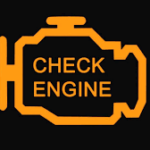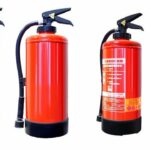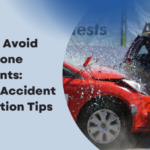Big construction companies with fleet vehicles need to ensure that their occupants are safe at all times and well prepared in the event of an emergency of any type on the road. In the U.S., some particular federal rules and regulations demand specific emergency equipment on all transportation power units. With all this in mind, here’s a list of the top six pieces of emergency equipment every construction fleet vehicle should carry.
Amber/Yellow Flashing Beacon
Flashing beacons produce an excellent warning signal to promote work zone safety along the road. They are an effective warning signal that’s ideal for many applications, including forklifts, utility trucks, and of course, construction vehicles.

Amber or yellow beacon lights for trucks are used as warning lights for stationary service vehicles or slow-moving ones on public thoroughfares. They are also appropriate as warning lights that encourage caution or heightened awareness of potential hazards.
First Aid Kit
As you already know, first aid gear is essential in any workplace. Unfortunately, construction work trucks and other vehicles are often not categorized as a “workplace,” according to administrative workers and executives who repeatedly fail to place first aid kits in construction trucks. This malpractice is absolutely incorrect, and we recommend including your vehicles when calculating how many first aid kits your construction business needs.
Each vehicle should have a kit that includes all necessary gadgets and at least one certified rescue blanket for the driver and other potential passengers. The blanket comes especially handy in unwanted situations during the winter as it can help keep passengers warm until help arrives.
Also Read:
- Top 5 Best Blind Spot Mirrors for Car in USA
- Anti-lock Braking System (ABS) – Working Principle, Main Components with Advantages and Disadvantages
Flares
Flares have long been viewed as the international sign of distress and should only be used when help is needed. The primary benefit of keeping flares in your construction vehicles, besides staying up to code, is that they work in all environmental conditions, including snow or fog. Other benefits of flares when compared to other portable light sources include:
- They don’t require an external power source like batteries;
- They are considerably brighter than most flashlights;
- Flares extinguish on their own, so their retrieval isn’t needed if the situation gets overly dangerous;
- They work to signal an emergency both during daylight and nighttime conditions.
Nevertheless, there’s an exception to the code requirement when it comes to commercial vehicles used to transport liquids, flammable gasses, or that use compressed gas as a fuel. If you have vehicles like this in your fleet, then you should know that these types of vehicles are not permitted to carry flares, oil lanterns, or other signals produced by a flame.
Fire Extinguisher
One piece of equipment that often gets overlooked as a necessity in construction vehicles is the fire extinguisher. This safety equipment piece is incredibly important because it could make the most significant difference in limiting the amount of damage caused if there’s some flame ignition in any of your fleet’s vehicles.

Besides, fire extinguishers are the first item listed in the Title 49 regulations. However, including the fire extinguisher in your safety program means that you need to make sure that your workers have proper training on using it and are well informed about the procedures before any emergencies on the road.
Red Flags
Red flags are handy when something unexpected happens, and the vehicle’s driver may not be able to move the massive vehicle into a safe enough zone on the road out of the way of traffic. Even more, if your fleet is part of the group not permitted to carry flares, that means having red flags is even more critical.
Not only do red flags help increase the visibility of the vehicles, but they also warn other drivers on the road that something is wrong, and they should take extra caution while passing. The only code requirement is that red flags shouldn’t be smaller than 12 square inches with a base that can keep them upright.
High Visibility Jackets Or Vests
Last but not least, there should be at least one high visibility jacket or vest for each occupant in the construction vehicle cab at all times. This item should be a fluorescent color and have multiple retro-reflective stripes on the back and front. The high visibility jacket together with the warning signs and traffic cones should essentially help reduce the chances of passengers getting injured by oncoming traffic. Additionally, it will also help the vehicle’s passengers be more visible in case rescue is needed.
Final Words
To wrap things up, make sure to check the condition of the emergency equipment items on a regular basis as there’s nothing worse than needing a fire extinguisher that doesn’t work properly.








